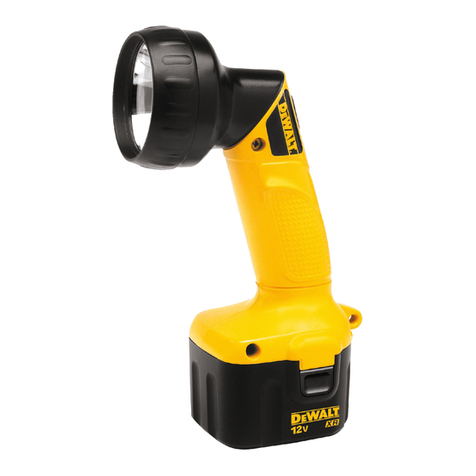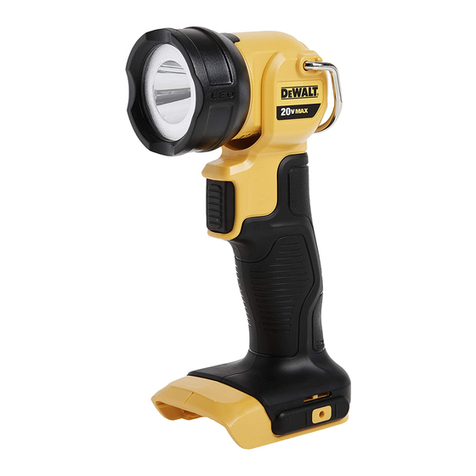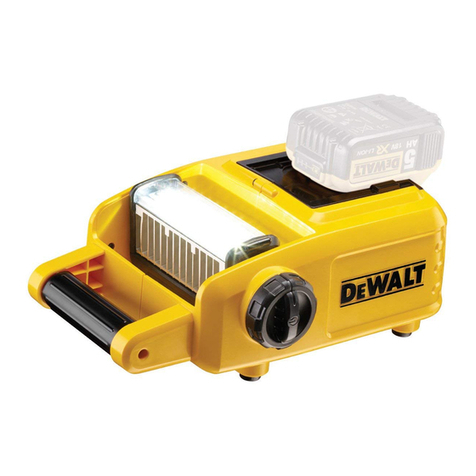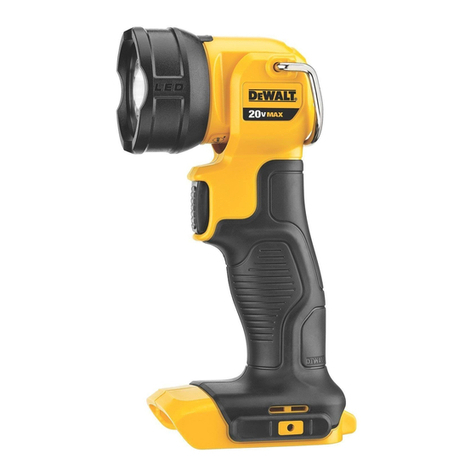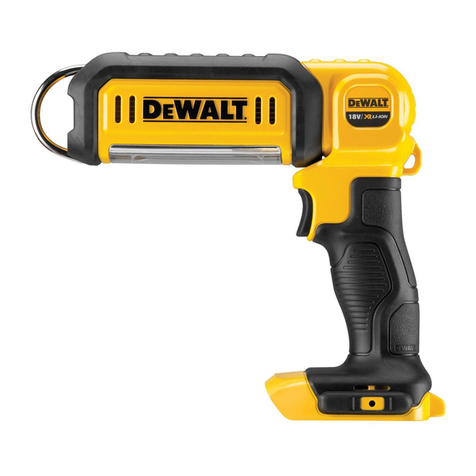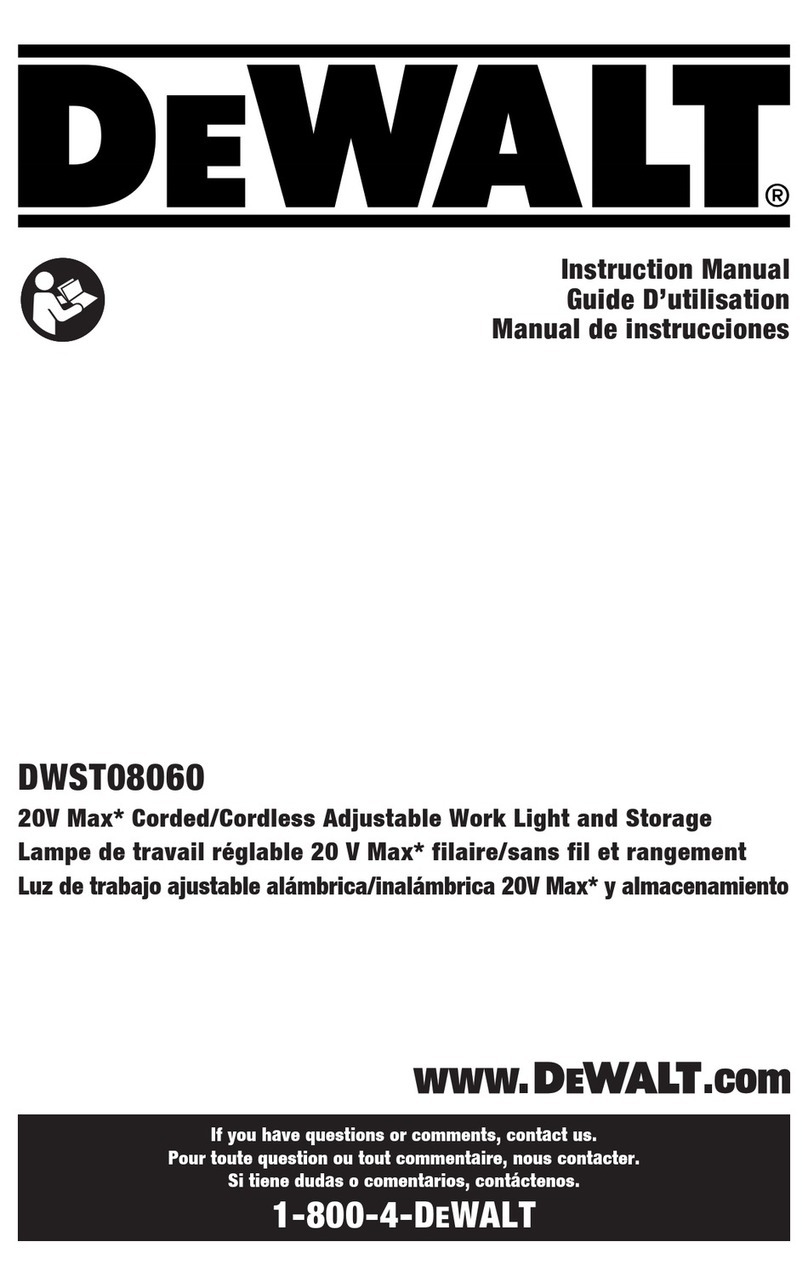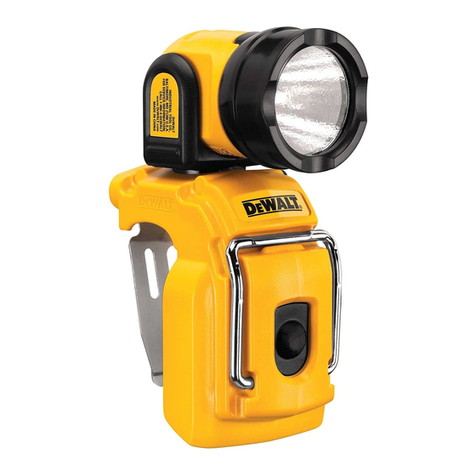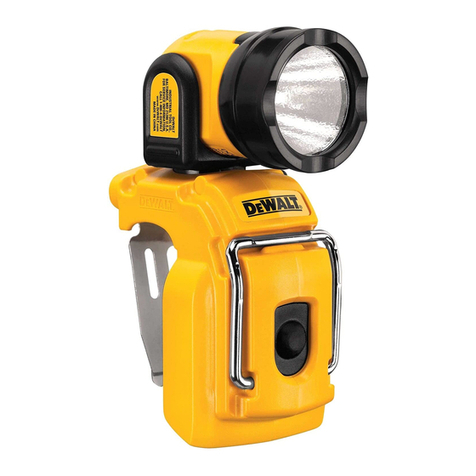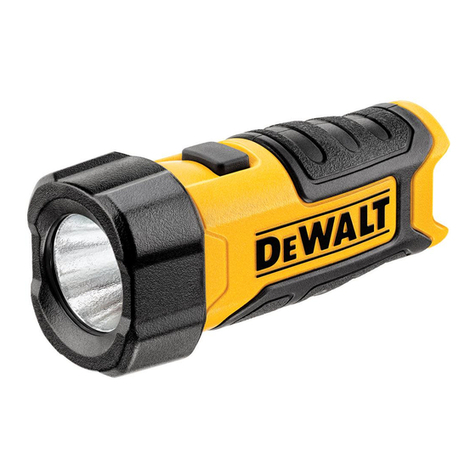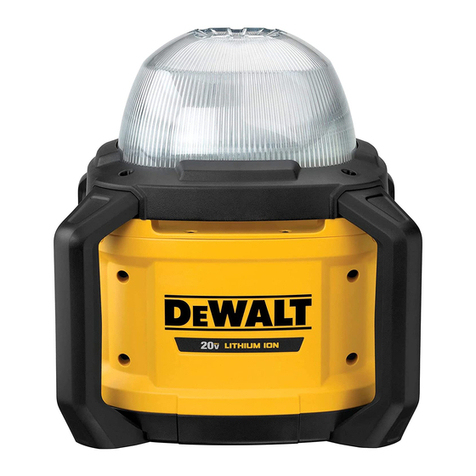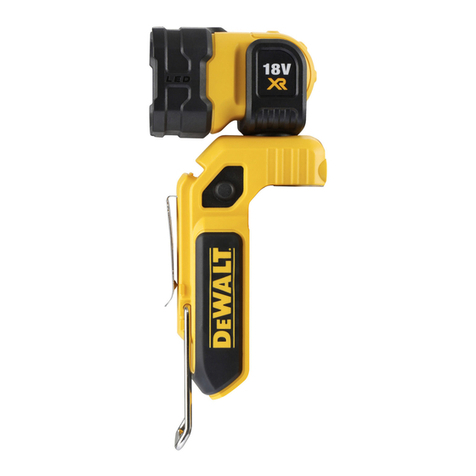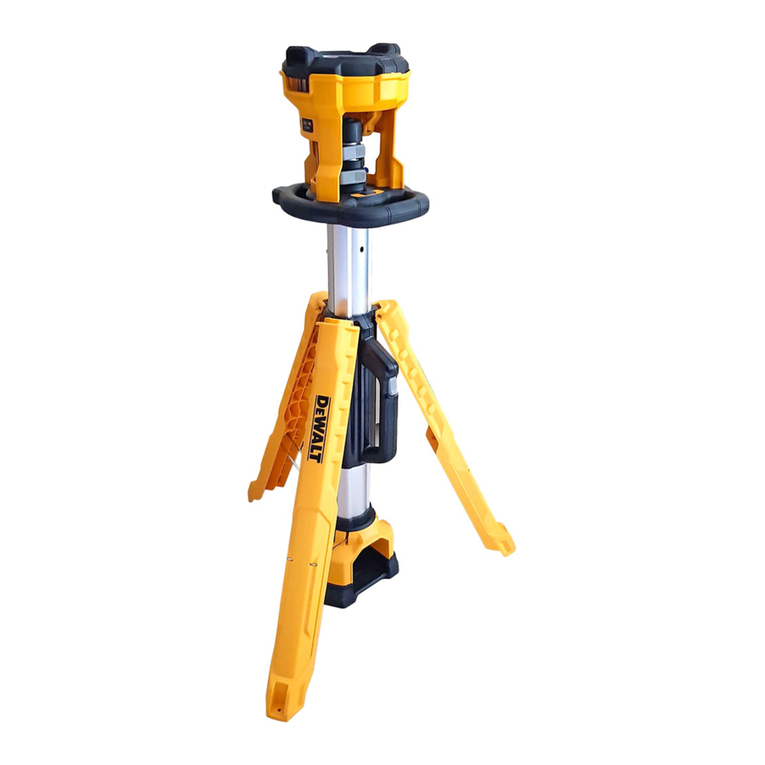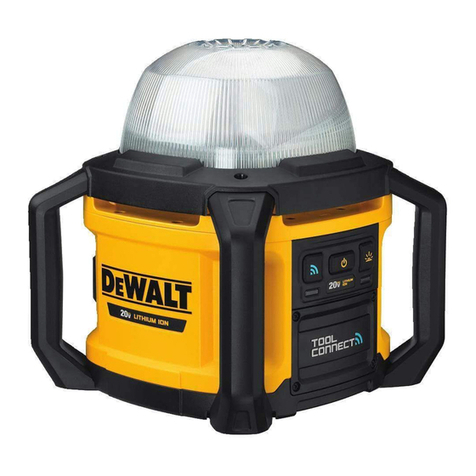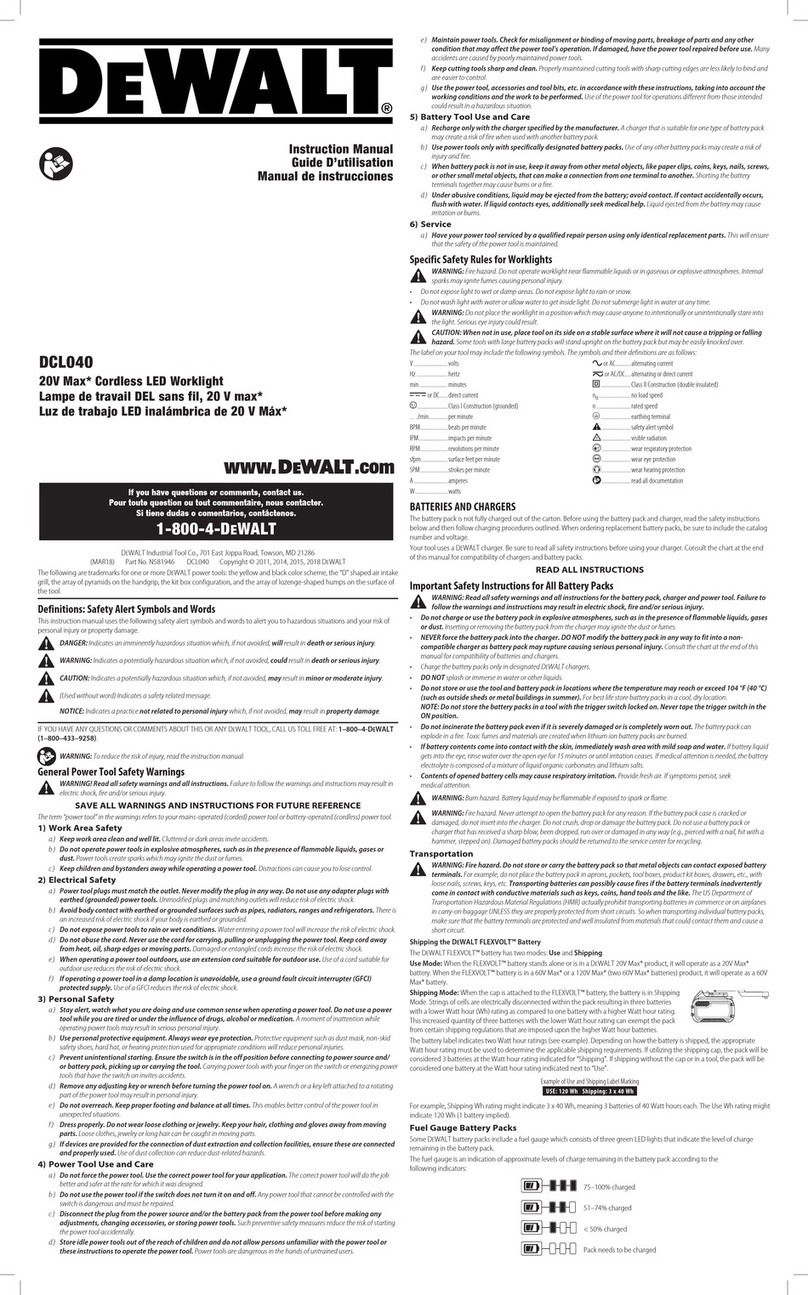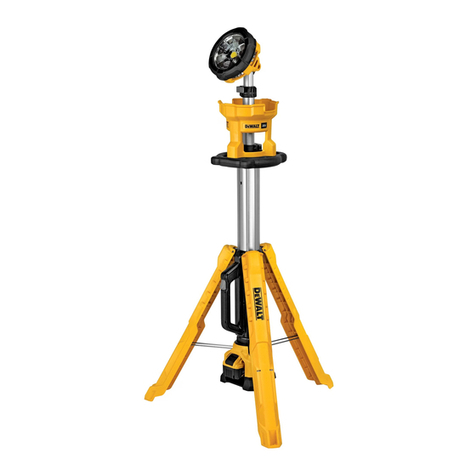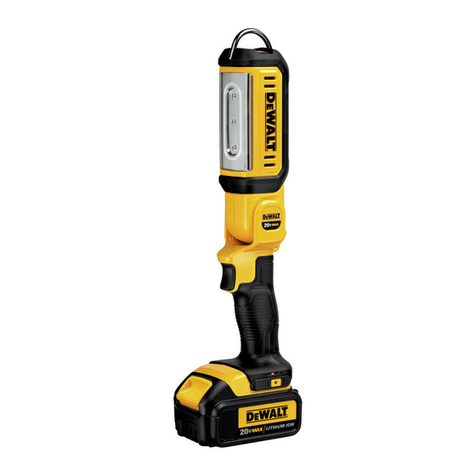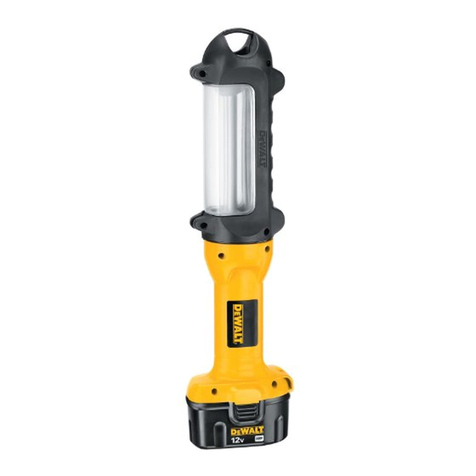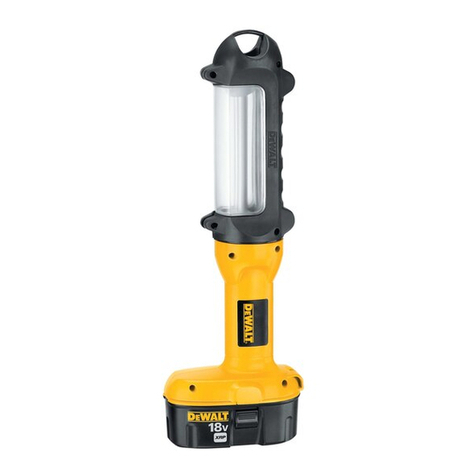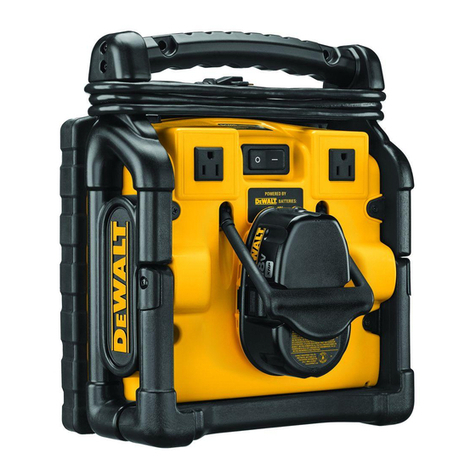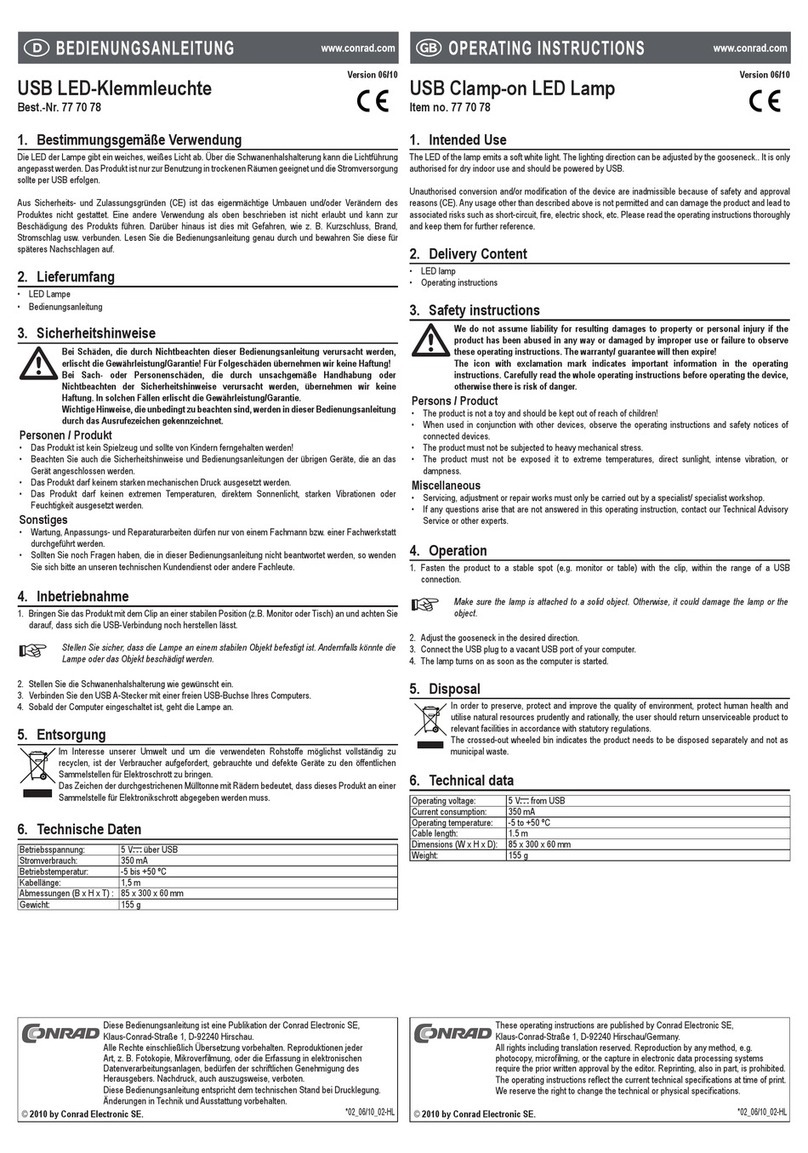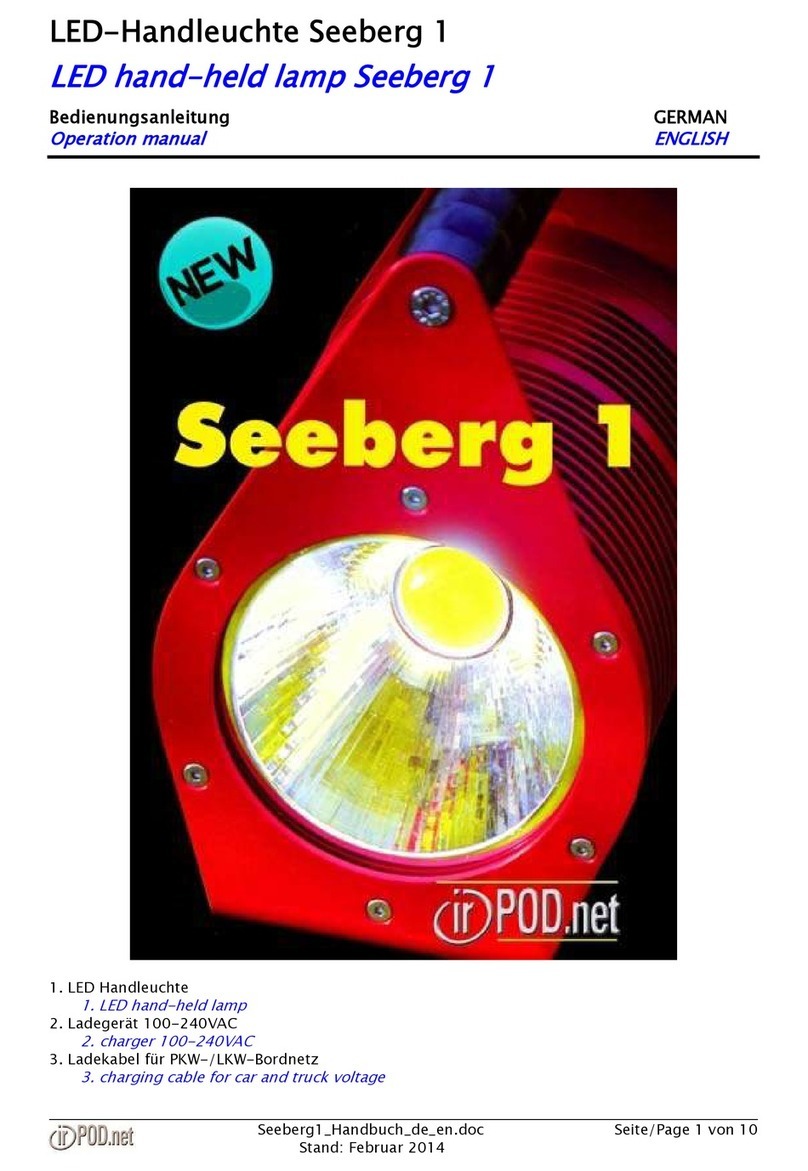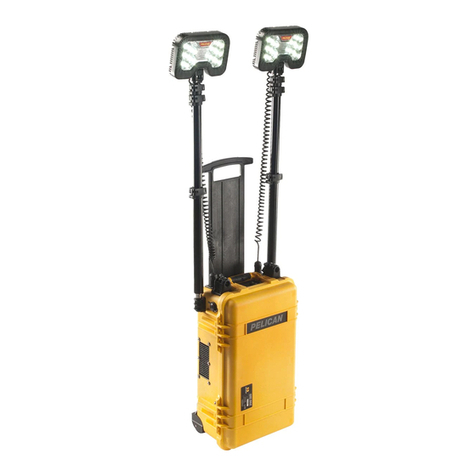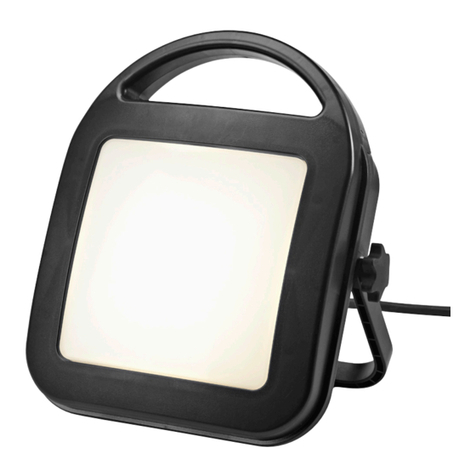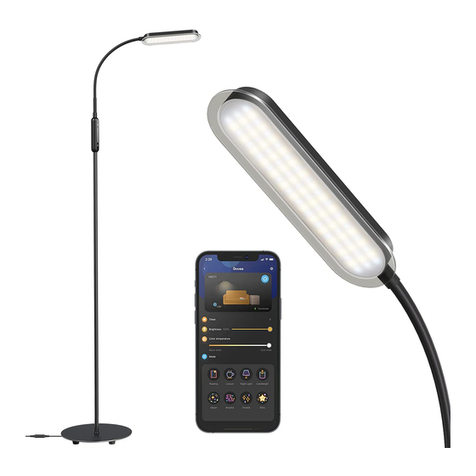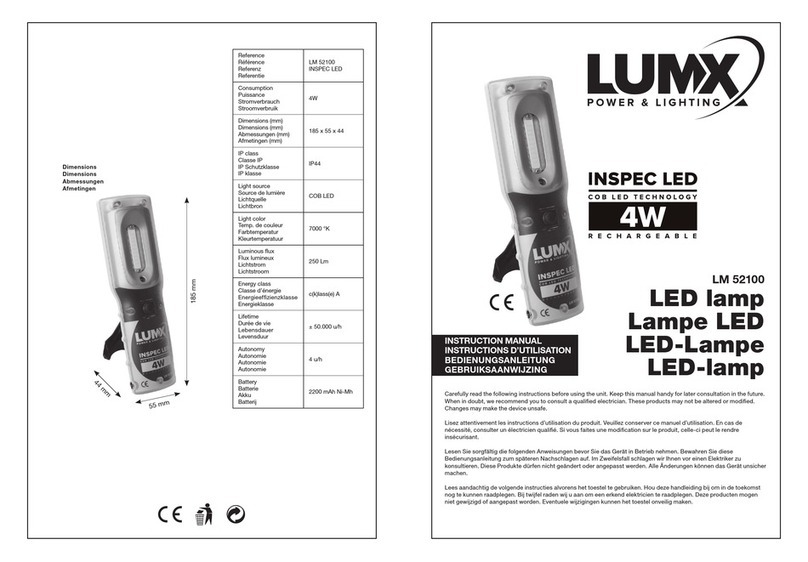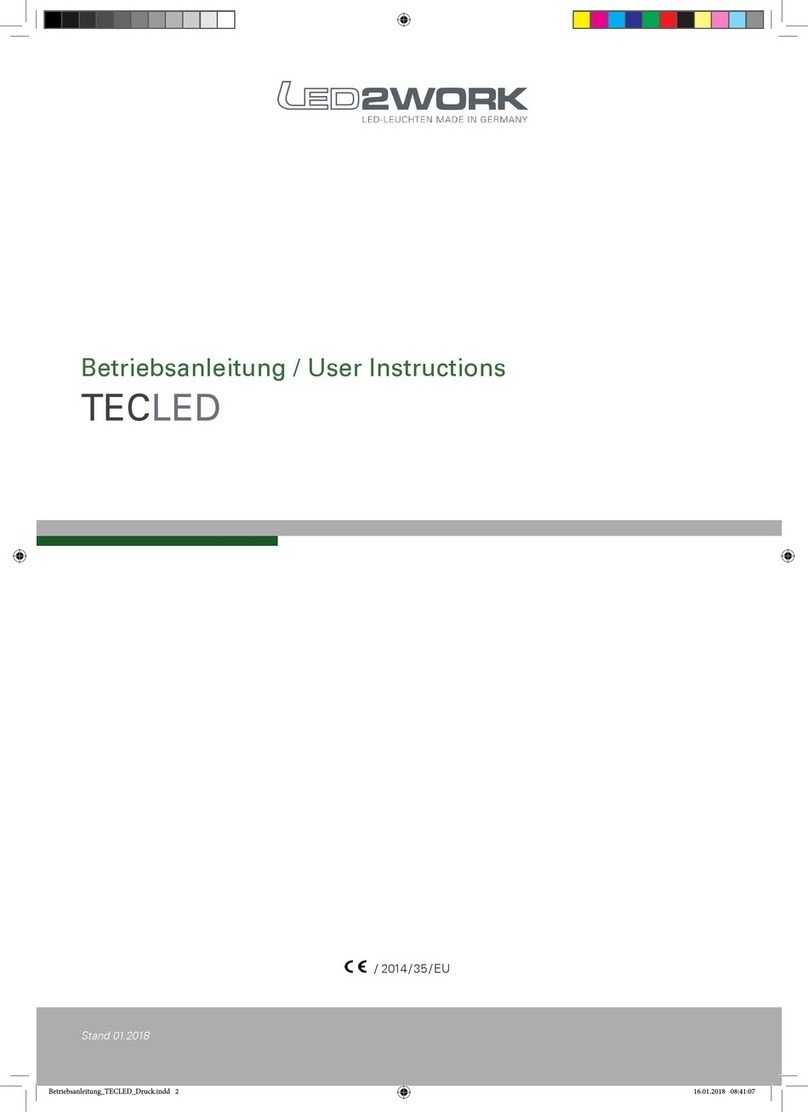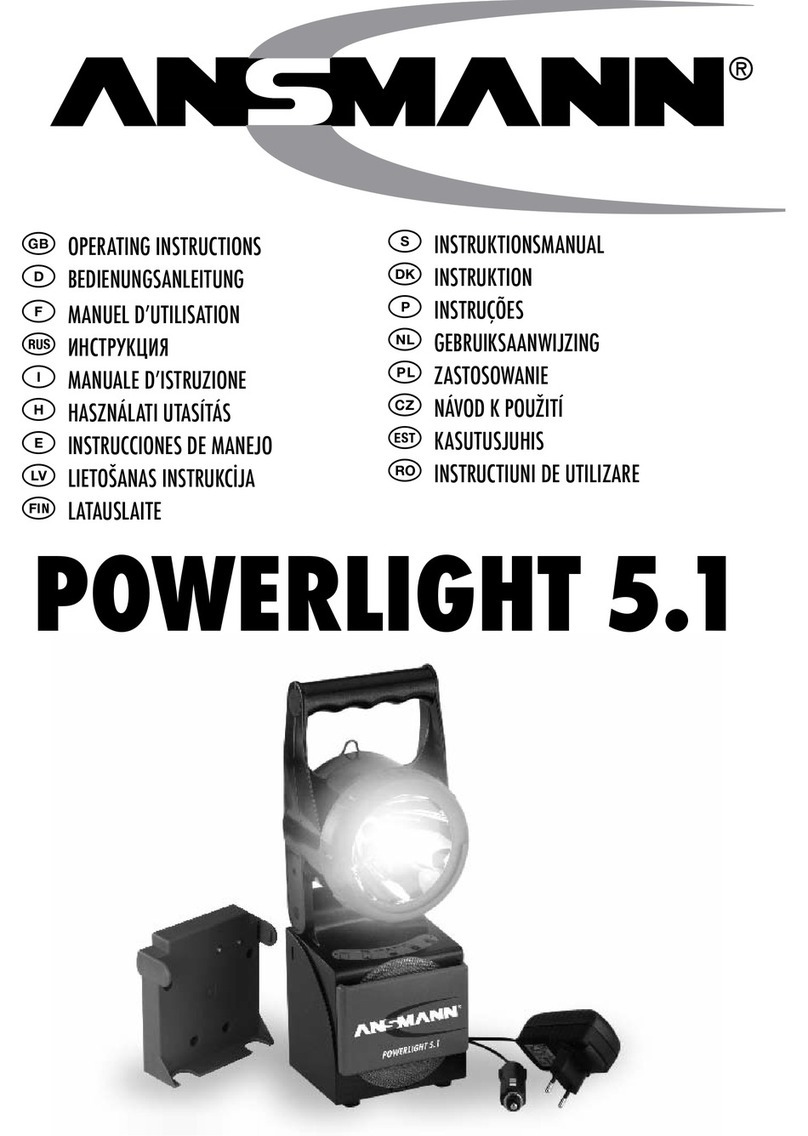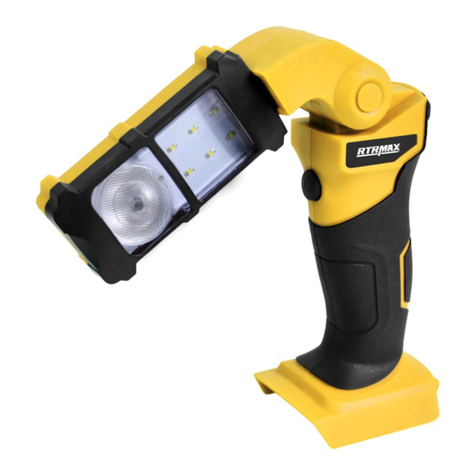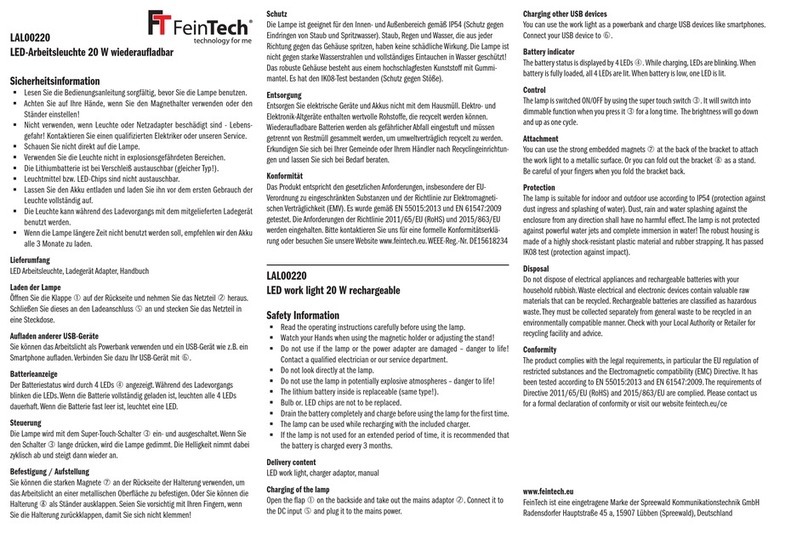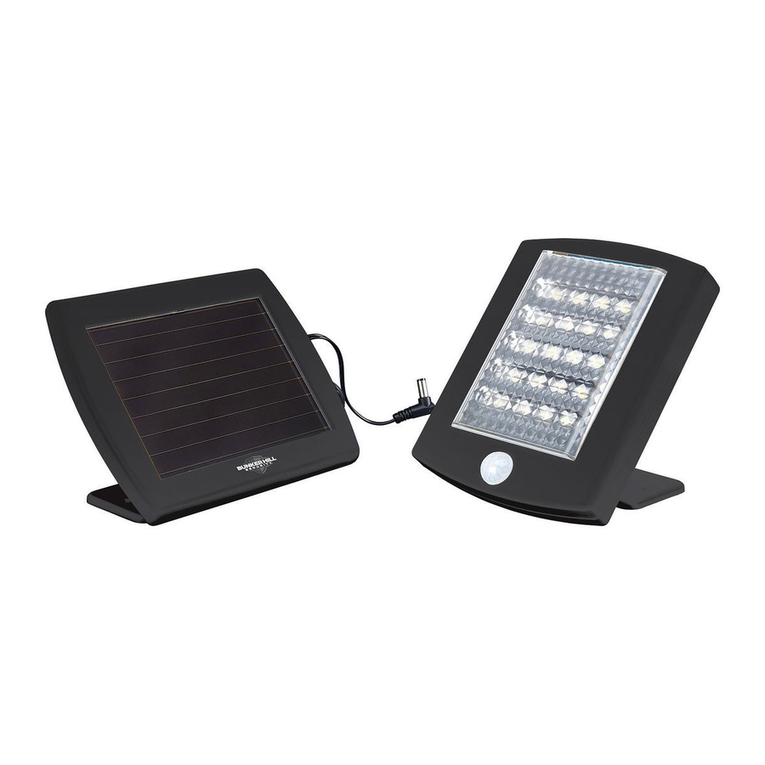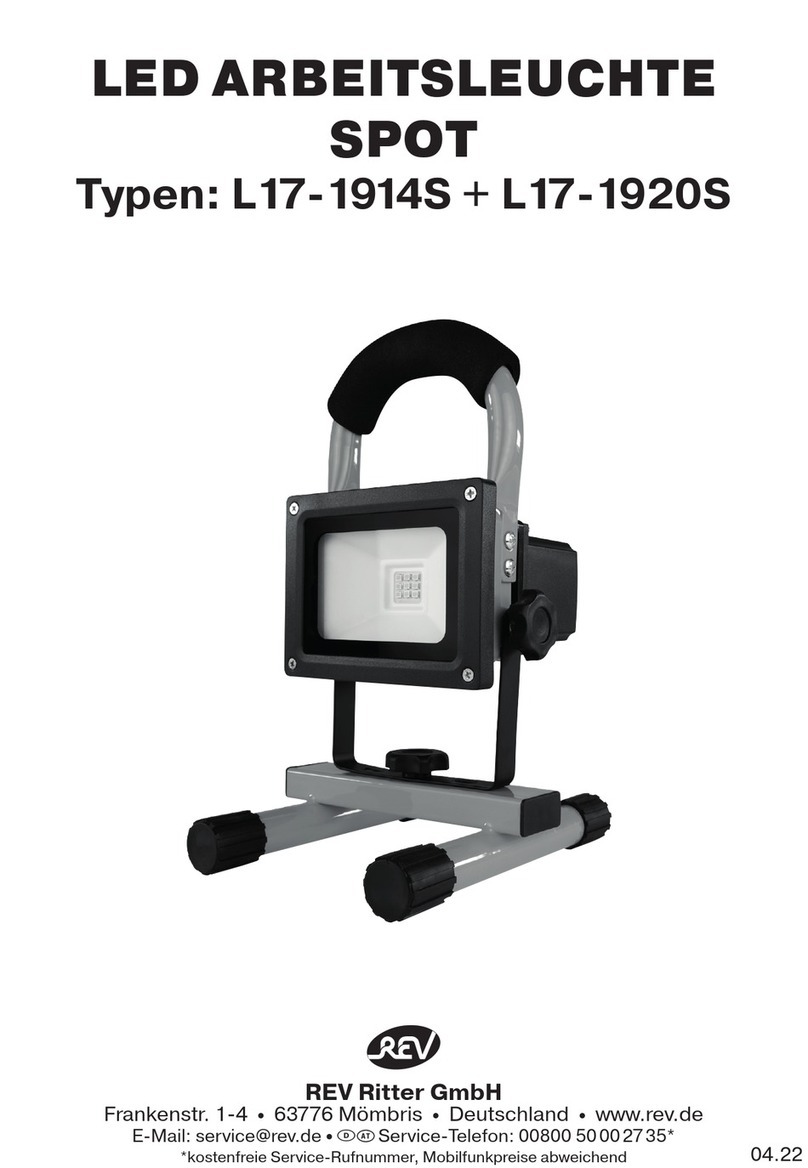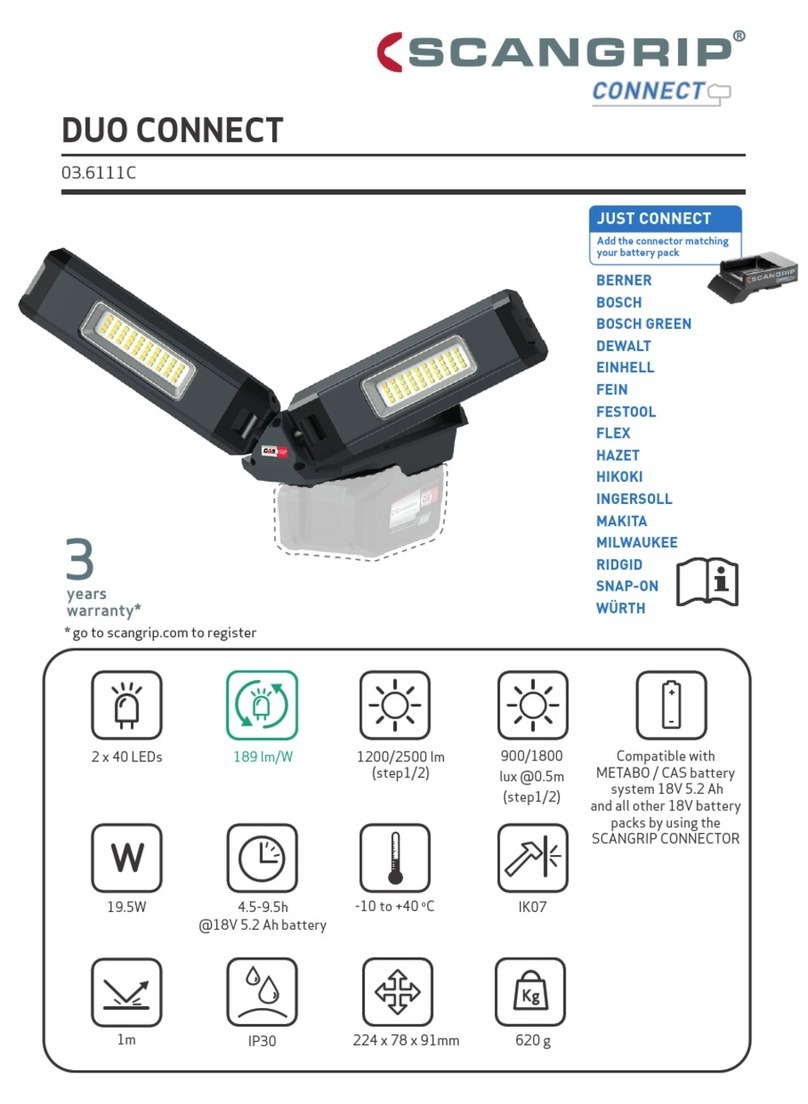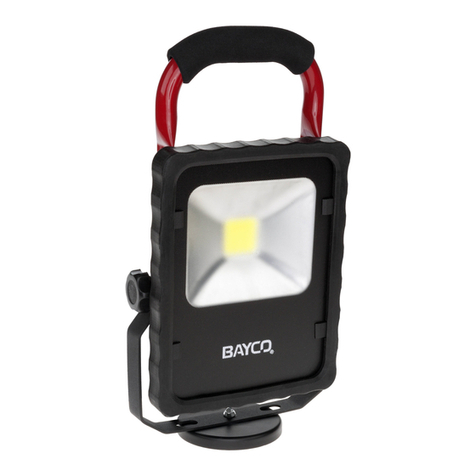ENGLISH
3
Grounding Instructions
In the event of malfunction or breakdown, grounding
provides a path of least resistance for electric current to
reduce the risk of electric shock. The area light must be
connected to a cord having an equipment-grounding
conductor and a grounding plug. The plug must be
plugged into an appropriate outlet that is properly
installed and grounded in accordance with all local codes
andordinances.
DANGER: Improper connection of the equipment
grounding conductor can result in a risk of electric
shock. The conductor with insulation having an outer
surface that is green with or without yellow stripes
is the equipment grounding conductor. If repair or
replacement of the cord or plug is necessary, do not
connect the equipment-grounding conductor to a
live terminal. Check with a qualified electrician or
serviceman if the grounding instructions are not
completely understood, or if in doubt as to whether
the area light is properly grounded. Do not modify the
plug connected to the area light—if it will not fit the
outlet, have a proper outlet installed by a qualified
electrician.
For grounded, cord-connected area
lights rated less than 15A and intended
for use on a nominal 120V supply circuit
The area light is for use on a nominal 120V circuit, and
should be connected to a grounding plug that looks like
the plug illustrated in sketch a. A temporary adaptor, which
looks like the adaptor illustrated in sketch b, may be used
to connect this plug to a 2-pole receptacle as shown in
sketch b if a properly grounded outlet is not available. The
temporary adaptor should be used only until a properly
grounded outlet can be installed by a qualified electrician.
The green colored rigid ear, lug, and the like, extending
from the adaptor must be connected to a permanent
ground such as a properly grounded outlet box cover.
Whenever the adaptor is used, it must be held in place by
the metal screw.
ADAPTER
GROUNDED
OUTLET
BOX
GROUNDING PIN
b
a
Use of Extension Cords with Area light
Only use a grounded extension cord that is rated at least
12amps and has a third-wire ground.
When a long extension cord is used to connect a area light
or tool, a voltage drop occurs. The longer the cord, the
greater the voltage drop. This results in less voltage being
supplied to the area light or tool and increases the amount
of current (amp) draw or reduces performance. A heavier
cord with a larger wire size will reduce the voltage drop. Be
sure to choose a cord that will supply enough voltage to
operate your tool and/or area light.
WARNING: Risk of electric shock. Keep extension cord
connection dry and off the ground.
WARNING: Keep electrical cords in good condition.
Do not use worn, bare, or frayed cords because they
can cause electrical shock.
WARNING: Operating equipment at low voltage
can cause it to overheat. Using an excessively long
extension cord can cause the cord to overheat.
For more information about extension cord size
requirements, refer to the Minimum Gauge for Cord Sets
chart found under Important Safety Instructions for the
Area Light/Charger.
Wireless Certifications and Safety
Information
• When traveling on airlines, be sure to comply with the
airline restrictions on usage of personal electronic devices
and Bluetooth®.
• The out of range alert feature has been designed to act
as an aid to warn against products getting misplaced or
stolen. It is not a security system.
• The connectivity range is up to 100 feet (30.5 meters)
depending on environment and location.
• The shortwave radio frequency signals of a Bluetooth®
device may impair the operation of other electronic and
medical devices (such as pacemakers or hearing aids).
• This device is CAN ICES-3(B)/NMB-3(B) compliant.
• This device complies with Part 15 of the FCC rules and
Industry Canada License-exempt RSS standard(s).
Operation is subject to the following two conditions:
ʵ This device may not cause harmful interference, and
ʵ This device must accept any interference
received, including interference that may cause
undesiredoperation.
NOTE: This equipment has been tested and found to comply
with the limits for a Class B digital device, pursuant to Part
15 of the FCC Rules. These limits are designed to provide
reasonable protection against harmful interference in a
residential installation. This equipment generates, uses and
can radiate radio frequency energy and, if not installed and
used in accordance with the instructions, may cause harmful
interference to radio communications. However, there is no
guarantee that interference will not occur in a particular
installation. If this equipment does cause harmful interference
to radio or television reception, which can be determined by
turning the equipment off and on, the user is encouraged
to try to correct the interference by one or more of the
followingmeasures:
ʵ Reorient or relocate the receiving antenna.
ʵ Increase the separation between the equipment and
adaptor.
ʵ Connect the equipment into an outlet on a circuit
different from that to which the adaptor is connected.
ʵ Consult the dealer or an experienced radio/TV
technician for help.
